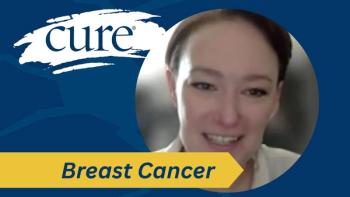
- Spring 2006
- Volume 5
- Issue 1
Web Exclusive: A Dangerous Side Effect
Herceptin can cause cardiac toxicity
Although Herceptin has fewer side effects than traditional chemotherapy, it carries an increased risk of heart damage, a side effect that can have serious long-term consequences. Herceptin, radiation and anthracyclines can damage cardiomyocytes (the heart’s muscle cells), resulting in changes in blood pressure, heart arrhythmias and, in rare instances, congestive heart failure, the result of the heart ineffectively pumping blood and oxygen throughout the body. Most patients who develop cardiac toxicity have pre-existing heart problems that are aggravated by the stress of cancer and its treatment. Women who received radiation to their left breast are also at increased risk of heart damage because “scatter” radiation may affect their heart muscle. Other risk factors can include diabetes, obesity and smoking.
Researchers speculate the cause of Herceptin-related heart disease may be interference with HER2, the very proteins Herceptin targets to destroy breast cancer cells. HER2 receptors appear to protect heart muscle by activating important survival pathways. Taken alone, Herceptin was associated with heart problems in 5 percent of women. But when Herceptin was combined with Adriamycin and Cytoxan, 19 percent of women developed heart problems. Combining Herceptin with Taxotere and carboplatin appeared to have the lowest risk of cardiac toxicity.
Herceptin in a combination regimen can be more problematic because drugs work in slightly different ways. While Herceptin acts against HER2, anthracyclines, such as Adriamycin, promote the production of free radicals, unstable molecules that are produced normally in the body. When an abundance of free radicals are created from anthracyclines, it can lead to damage of the heart cells’ mitochondria, causing increased cell death and ultimately heart disease.
Patients taking Herceptin, especially those with previous heart conditions, should be closely monitored. Techniques to evaluate heart disease after treatment include echocardiogram, which produces a sonogram-like scan, and multiple-gated acquisition (MUGA) scans, which produce a moving image of the heart muscle to measure how well the heart pumps blood.
Unfortunately, no standard heart monitoring guidelines exist for cancer survivors. It has not been established whether monitoring falls to an oncologist, cardiologist or the survivors’ primary physician. Also unknown is how often or for how long survivors should be monitored for heart problems, but recent data may soon determine the best follow-up approach.
In most cases, cardiac toxicity is manageable with medication, but it is still a balancing act for the physician and patient when weighing the risk of heart disease with the potential benefit of cancer-free survival.
Articles in this issue
over 16 years ago
Quick Relief for Breakthrough Painover 16 years ago
Easing Bone Painover 16 years ago
Co-Survivor Essaysover 16 years ago
Supporting Co-Survivorsover 16 years ago
Recommended Resourcesover 16 years ago
How Part D Came to Beover 16 years ago
Novel Cytokines for RCCover 16 years ago
An Unpleasant Surpriseover 16 years ago
Taking a Closer Lookover 16 years ago
Staging Kidney Cancer




